COTANCE News March 2025
COTANCE News March 2025
Women in Tanneries: Special Womens’ 2nd Edition
March is all about celebrating women—their strength, their ambition, and their impact. After the overwhelming success of our March 2024 edition, we knew we had to make this a tradition. This year, we’re back, diving deeper into the untold stories of the incredible women working in the European leather industry. From breaking barriers to mastering the craft, their journeys are as bold and resilient as the leather they help create.
The second edition of our special newsletter will feature three women from Italy, Spain, and Portugal, each representing a different age group, job role, and career journey. Their stories highlight passion, resilience, and opportunity, proving that the leather industry is full of possibilities for those ready to challenge conventions.
By sharing their experiences, COTANCE hopes to inspire more women to explore careers in this evolving sector—one where talent, skill, and determination matter more than ever.
Barbara Mastrotto
ITALY

Coming from a family of pioneers in the leather industry, Barbara Mastrotto began her career at 22, working in accounting and logistics before joining the Automotive Division of Rino Mastrotto in 2004. Now Head of the Automotive & Mobility Business Unit, she champions meritocracy, ethical leadership, and sustainability, striving to balance its environmental, social, and economic pillars.
LauraCastro Gonçalves
PORTUGAL

At just 24 years old, Laura Castro Gonçalves has been part of A. Castro & Filhos for four years, gaining experience in various roles. With a degree in Marketing Management, she now leads chemicals and commercial operations, focusing on innovative and sustainable solutions for the leather industry.
Irene Tarazona
SPAIN
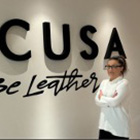
As HR Manager at INCUSA, Irene Tarazona is dedicated to creating a workplace where talent thrives. She actively supports women in the leather industry, ensuring equal opportunities for training and leadership. By bridging the gender gap, she helps make tanneries a more inclusive and rewarding place to work.
Your Journey into Leather: What inspired you to join the leather industry? Was it a deliberate choice, or did you discover your passion for leather along the way?
Irene: I have always found it a fascinating sector because it is related to the world of fashion, which I am passionate about. I found myself in an unknown sector that attracted me from the very first moment and that was completely different from my previous professional experiences.
Barbara: For me it was a simple and almost obvious choice. I have always heard about leather in my family and the passion for this particular product was passed on to me by my dad who is in love with leather, with the ever-evolving technology needed to process it, and with the importance of tanning in enhancing a by-product of slaughtering from the food industry. I was very happy when he asked me to join the company to bring my own contribution, and it was in the automotive world that I found myself.
Laura: I entered the leather industry almost by chance. After university, I started working in the family business and, over time, I realized how challenging and fascinating this sector was. Today, I love what I do and know that it is a demanding field, requiring dedication, knowledge, and constant innovation. It is an industry full of creativity and challenges.
Breaking Stereotypes: The leather industry has traditionally been male-dominated. Have you encountered challenges as a woman in this sector? How have you overcome them?
Irene: Yes, I found myself at a very young age in a mostly male sector, but that helped me to reinvent myself, to set goals and objectives at a professional level, as well as to develop new skills that have made me grow personally and professionally.
Barbara: The leather industry is a male-dominated world indeed. I have been lucky, however, because the industry I supervise is international, and I have been able to deal from the very beginning with markets such as the United States, which was more advanced in this sense, even 20 years ago, having women in leadership roles. The Italian experience, on the other hand, was initially a bit more close-minded, but with determination, professionalism, and pragmatism it was possible to handle even some less comfy situations.
Laura: The leather industry has traditionally been male-dominated, but that has never been an obstacle for me. I work with many women, and I feel that we have an equal place alongside men, with the same opportunities to grow and innovate. I believe and know that knowledge, dedication, and results are what truly matter, and that is what allows us to establish our place in the industry.
The Beauty of Leather: What aspects of leather do you think deserve more recognition, especially among younger consumers?
Laura: Leather is a timeless and natural material that carries the history of our ancestors, reflecting generations of knowledge and craftsmanship. Behind every piece lies hard work, dedication, and skill, transforming raw material into something truly unique. Its exceptional durability allows it to last for generations without losing its quality or charm. Moreover, leather stands out for its endless creative possibilities—offering a wide range of designs, colors, and finishes—while maintaining its authentic and sustainable character.
Barbara: Innovative, sustainable, Circular, Zero waste approach, uniqueness, high performance, durability, heritage, animal well-fair … I would say all of these are features that young consumers highly appreciate. The challenge this material often faces with young people and the final market in general is getting known for what it genuinely is. It is up to us to improve in communicating and providing facts that support the value of it.
Work-Life Balance & Passion: What do you love most about working in this industry? How does your job balance technical skills, creativity, and tradition?
Laura: What fascinates me most about this industry is the perfect balance between tradition, technical expertise, and creativity. Leather carries centuries of history while offering endless possibilities for innovation. In my work, precision and attention to detail go hand in hand with the freedom to create and reinvent, making each day dynamic and inspiring.
A Message to Young Women: Many young women may not consider a career in tanneries. What would you say to those who are curious but unsure about entering this industry?
Barbara: Tannery is a challenging but at the same time fascinating industry. It can open up opportunities in different markets and roles: fashion, interiors, automotive…. and it requires different skills ranging from technical expertise to creativity …. It ’is an industry that is thrilling. The world of tanning has mellowed, and new generations have helped make it less male-oriented. There is more of a preference for teamwork, and female input is appreciated.
The conclusion is clear: European tanneries are not just places of opportunity for women; it is a sector where they are already making significant impacts and leading change. By highlighting their achievements maybe we inspire more women to join this exciting and evolving world of leather.
Read the full interviews at euroleather.com
COTANCE News Jan – Feb 2025
Leather Biodegradability: Another Reason to Embrace Leather
We often hear about massive floating ”islands” of plastic polluting our oceans. But have you ever wondered why leather is never part of that conversation
One possible explanation: leather is a natural, biodegradable material. Unlike plastic, which lingers in the environment for centuries, leather naturally breaks down at the end of its life.
When produced using natural or biobased tanning agents and biodegradable additives, leather can decompose in industrial composting in as little as 20 days (as highlighted in Karl Flowers’ article, “Opportunities at Leather’s End-of-Life,” ILM, Sep-Oct 2024). That’s a timeframe comparable to vegetable waste, which takes 5–30 days!
Let’s be clear: all materials eventually biodegrade, but what sets leather apart is its ability to decompose quickly (20–60 days) and safely for the environment, transforming—under the right conditions—into compost that enriches the soil with vital nutrients.
This unique feature makes leather not only a valuable part of the circular economy, but also one of the most sustainable fashion materials.
And that’s just one of many reasons to choose leather!
Biodegradability refers to the process by which organic materials are broken down by microorganisms into simpler components like carbon dioxide, water, and ammonia.
Compostability, a measure of biodegradation, refers to the ability of a material to break down into biomass without releasing harmful or toxic substances—provided it does not contain hazardous components that persist after decomposition.
Any leather can be composted but the speed of degradation and environmental impact depends on the tanning chemistry used.
Producing fully biodegradable leather requires advanced technological solutions, and the industry is making incredible strides in this area. But even conventionally produced European leather demonstrates the ability to decompose naturally, and here are the studies to back it up.
A Study of the Composting Capacity of Different Kinds of Leathers, Leatherette, and Alternatives
The study demonstrated that genuine leather, especially alginate-treated, fully degrades within 21–25 days, with wet-blue leather degrading in 31–35 days. Alternatives like leatherette, Piñatex®, and Desserto® showed no degradation after 90 days, underscoring leather’s superior biodegradability compared to synthetic and plant-based substitutes.
Material Circular Bioeconomy: Disintegration and Biodegradability of Leather and Trendy Alternatives
Vegetable-tanned leather compost promoted 74% more plant growth and proved suitable for agriculture, showcasing leather’s capacity to enrich soils. Meanwhile, most fake leather alternatives showed poor biodegradability, raising significant waste concerns at the end of their life.
Compost-Leather_able II Project
Compost-Leather-Able II Project (INESCOP, IVACE & ERDF)
This study demonstrated that all five tested leather types, featuring various tannages and finishes, exhibited high biodegradability and compostability under lab conditions. However, polymeric finishes sometimes degraded slower than leather, leaving residual fractions in compost.
Assessment of the Biodegradability and Compost of Finished Leathers
These findings underscore the potential of eco-friendly finishes to reduce the environmental footprint of leather production, promoting sustainability and further aligning leather with circular economy goals. Bio-based finishes showed strong biodegradability, while traditional finishes exhibited moderate levels. Notably, some finishes enhanced plant growth during composting, highlighting leather’s potential for eco-friendly practices in production.
Leather stands out as the most sustainable material available
With its ability to “transform waste into beauty”, support closed-loop production cycles, and naturally return to the environment at the end of its service life, leather stands out as one of the most sustainable materials available. Its unique properties make it a crucial ally in achieving the goals of the EU Green Deal, supporting the success of key regulations like the Ecodesign, Waste Framework & Green Claims Directives.
So, as you consider your next purchase, remember: choosing leather is choosing a material that supports the planet—from cradle to grave.
COTANCE News 12 / 2024 December
Double-Face Leather: Simple, Warm, Sustainable
Do you think leather isn’t suitable for winter? Then you haven’t heard of double-face leather! It’s one of the warmest and most natural solutions for the season. Made primarily from sheepskin, it combines two faces in one garment: soft wool on the inside for warmth and supple leather on the outside for protection.
In the coldest northern regions, people rely on double-face coats, hats, gloves, and boots for their unmatched warmth and resilience to extreme temperatures and conditions. With double-face leather, you’ll stay cosy, comfortable, and protected—and we guarantee that you’ll truly enjoy winter, perhaps for the first time.
What is Double-Face Leather ?
Double-face leather is a natural material crafted from lamb or sheepskin, where the wool remains attached to the leather during the tanning process. This creates a garment that provides both insulation and protection in one piece, eliminating the need for additional linings. The result is an incredibly functional and versatile material that keeps you warm in the harshest conditions.
The Advantages of Double-Face Leather
- Warm:
- The wool interior provides natural warmth, while the leather exterior shields against wind, snow, and rain.
- Simple:
- Double-face leather garments are a timeless investment, built to last for decades and easy to care for. Unlike fast fashion, a quality sheepskin coat can endure over 50 years, combining style, durability, and low maintenance.
- Sustainable:
- Double-face leather is sustainable because it upcycles meat industry byproducts into high-quality, durable, and warm garments, reducing waste that would otherwise go to landfills.
Simple, Warm, Sustainable
Double-face on frosty, cold and windy days – no more cold ears, feet or hands – enjoy the time outside, whether you commute to work by train or bus, or go sledding with your children. With double-face leather, nature makes it easy for us to stay warm and be sustainable!
Nyhetsbrev COTANCE november


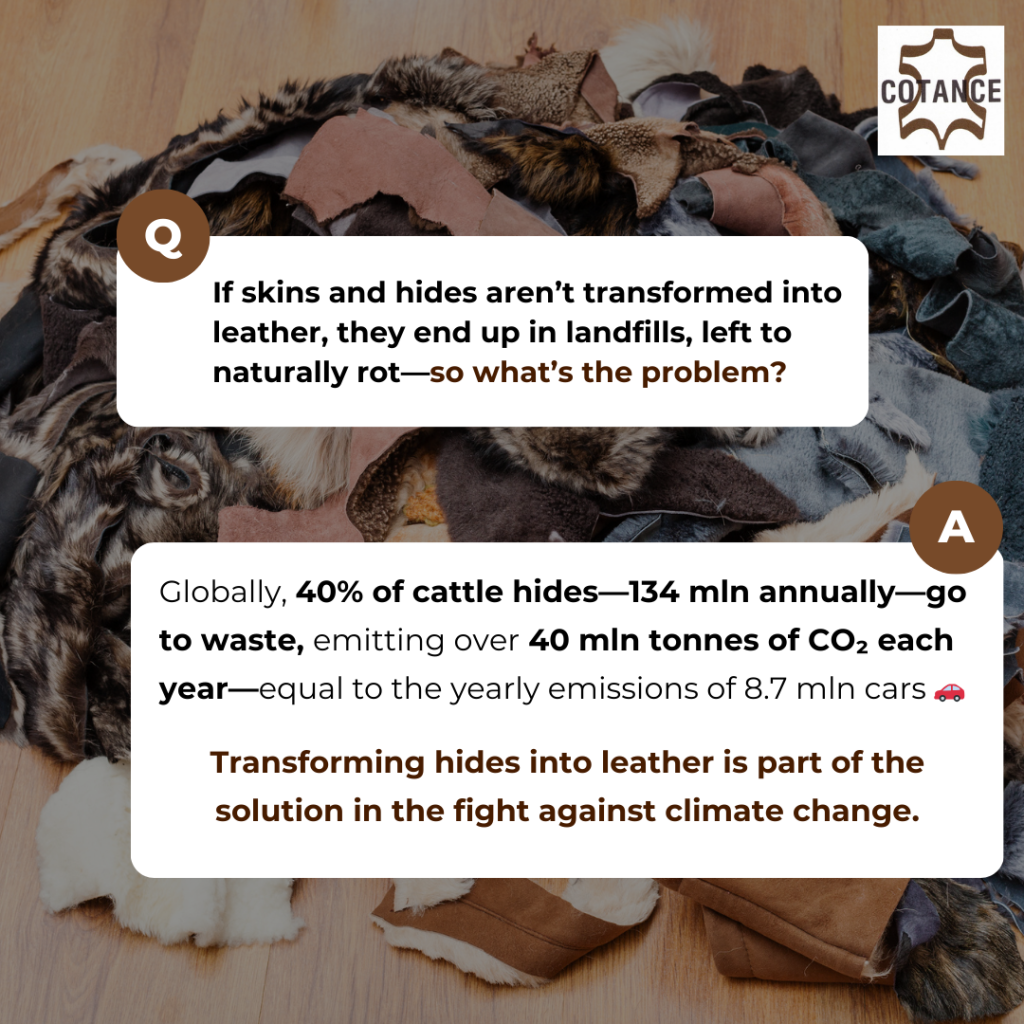


The Takeaway?
Turning hides into leather is more than just a craft—it’s a powerful solution to fight fashion-induced climate change, reduce waste, and create beauty that lasts.
Leather is a timeless circular material with a vital role to play in sustainability. Let’s share its story and give it the recognition it truly deserves!

Sign in – leatherbiz: Leading news site for the global leather in

| You want to know more: A startling revelation | LeatherBiz article The study on ”Carbon Footprint of European Bovine Leather (COTANCE) | Study Preliminary Life Cycle Assessment Report 2024-03 (LHCA) |Web Leather and Hide Council of America |Website |
Copyright © 2024, COTANCE, All rights reserved.
Our mailing address is:
cotance@euroleather.com
Want to change how you receive these emails?
You can update your preferences or unsubscribe from this list.
Leather is not the driver of deforestation

NEWS 8/2024
European Leather Industry Provides Scientific Evidence in Support of Excluding Leather from the Scope of the EUDR
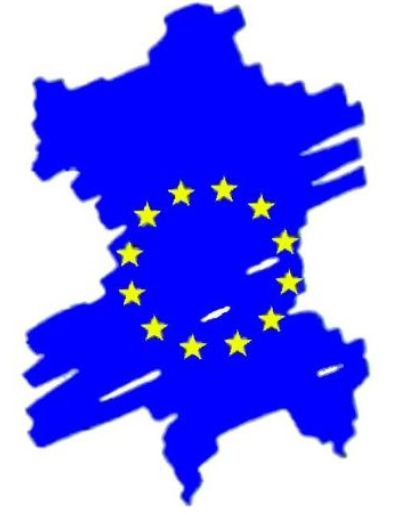
Leather is not the driver of deforestation—this is obvious to anyone involved in the leather supply chain, from livestock producers to fashion brands. Yet, with leather included in the scope of the European Deforestation Regulation (EUDR), it became essential to support this fact with comprehensive analysis.
With this September newsletter, we are proud to present scientific evidence supporting the European leather industry’s position in the EUDR Review. The study, “Socio-economic and Environmental Analysis of the Effects of Regulation 2023/1115/EU on the European Leather Sector,” commissioned by UNIC and COTANCE and conducted by Sant’Anna School of Advanced Studies of the University of Pisa, was unveiled on September 18, 2024, at the Lineapelle Fair to become a game-changer in defence of our industry.
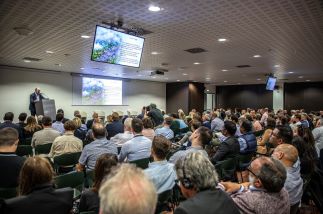
The study, structured into technical, socio-economic, and environmental assessments, reveals key findings that will be instrumental for the leather industry during the EUDR review process.
No Direct Link to Deforestation: The study, supported by an extensive technical analysis (94 million+ records, 29,200+ active serial titles, and 330,000+ books) and 28 stakeholder interviews, found no direct link between leather and deforestation. Leather is derived from cattle raised primarily for meat and dairy, and its production does not incentivise cattle farming.
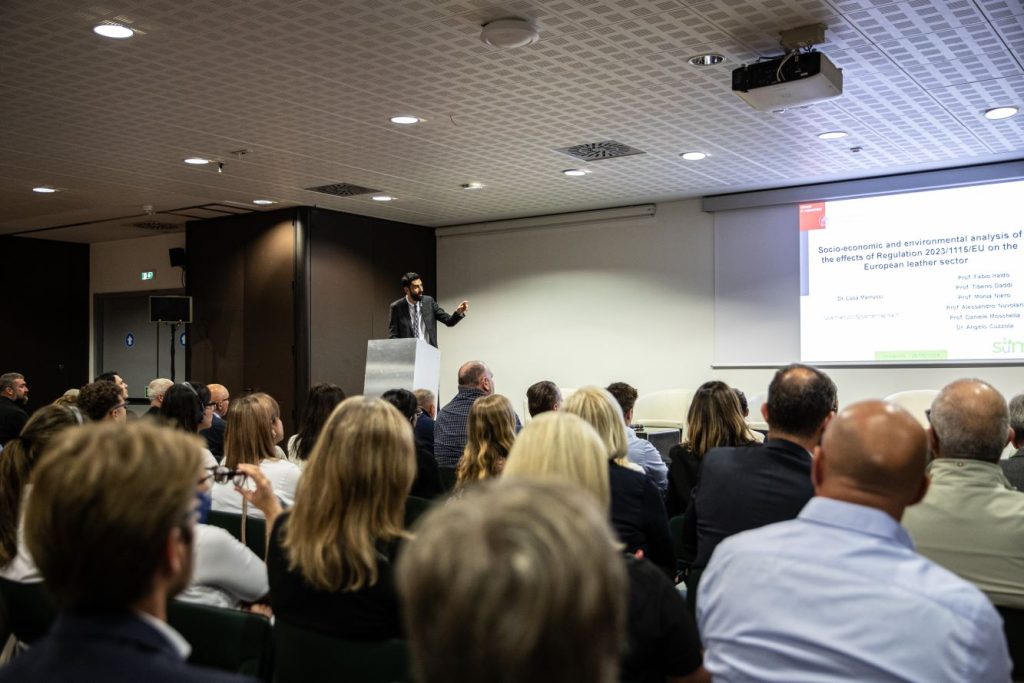
- Severe Economic Impact: The EUDR’s stringent traceability requirements could severely disrupt the European cattle hide supply chain, leaving European tanners without needed raw materials. This could force businesses to close and result in significant job losses across the industry’s supply chain.
- Environmental Risks of Alternatives: The study warns that short-circuiting the European leather industry and replacing leather with synthetic alternatives like polyurethane leather-like materials (PU LLM) could increase environmental damage, in terms of higher emissions and resource use. Diverting cattle hides to landfills or to countries with weaker environmental standards would undermine the Green Deal’s goals.

At the EUDR event in Lineapelle, a panel of global industry experts unanimously agreed: including leather in the EUDR is illogical and will not reduce cattle-related deforestation. Instead, it risks disrupting supply chains and shifting production to regions with lower environmental standards.
Panel participants from left to right: Ricardo Andrade (CICB, Brazil), Toni Baltes (German Hide Association WHL, ICHSLTA), Max Engelke (A+B-hides), Micaela Topper (AHSLEA, Australia), Kevin Latner (LHCA, USA) and Dave Harrison (Beef+Lamb, New Zealand).
COTANCE stands firm in advocating for the removal of leather from the EUDR scope, presenting the Sant’Anna study in support of its argument. This academic investigation will be providing crucial intelligence in the context of the European Commission’s review of the regulation.
Stay tuned for more updates as COTANCE continues to engage with policymakers and stakeholders to safeguard the interests of the European leather industry.
| If you want to go further: Socio-economic and Environmental Analysis of the Effects of Regulation 2023/1115/EU on the European Leather Sector | Study ”EPP demands delay of ’bureaucratic monster’ deforestation law” | Article ”Deforestation in the leather supply chain takes centre stage in Milan and Paris” | Article |
| Read more linguistic versions and former Newsletters. View in Browser. Copyright © 2024, COTANCE, All rights reserved. Our mailing address is: cotance@euroleather.com |
Cotance Nyhetsbrev Juli.
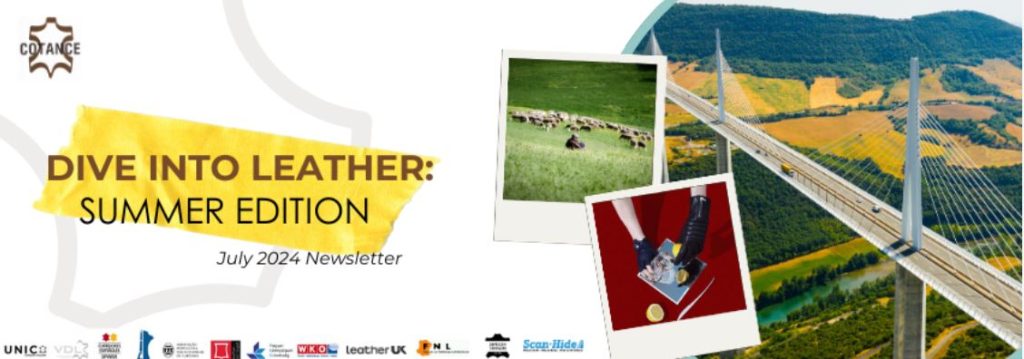
NEWS 7/2024
Dive Into Leather: Summer Edition.

Welcome to our Summer Edition! With the COTANCE July newsletter, we invite you to spend these summer holidays immersed in the world of leather.

Explore the UNESCO Sheep Value Chain in Millau, France, a centre for leather production since the Middle Ages. Attend leather craftsmanship workshops, read about the leather, or consider joining upcoming leather-related events.
Exploring the famous Sheep Value Chain
Millau has been a centre for leather production since the Middle Ages. Its historical significance in sheep farming and glove-making has shaped the region’s identity over the centuries. The traditional craft of glove-making in Millau is particularly renowned, with techniques passed down through generations.
That is why its inclusion in the Intangible Cultural Heritage in France, followed by the ongoing process of its inclusion in UNESCO’s prestigious World Heritage List, highlights the importance of the sheep value chain in Millau. This recognition celebrates the harmonious integration of sheep farming with leather production, emphasizing sustainable practices and artisanal skills. It acknowledges the role of local craftsmen and women in preserving traditional methods while adapting to modern demands.
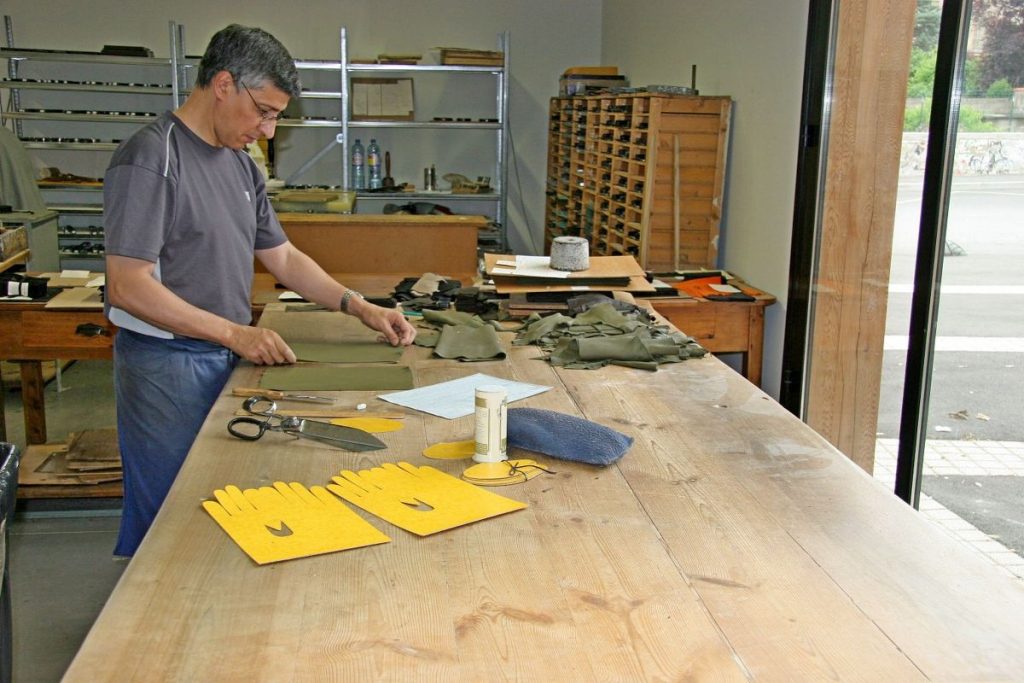
Cultural Experiences and Attractions:
– Visit the Millau Glove Museum to explore the history of glove-making. The museum features an impressive collection of gloves, historical artefacts, and exhibits on traditional crafting techniques.
2. Local Tanneries:
– Take a tour of local tanneries to see the traditional tanning process up close. Many tanneries in Millau offer guided tours where visitors can learn about the craftsmanship and methods used to produce high-quality leather.
3. Sheep Farming Tours:
– Experience the region’s sheep farming firsthand. Tours often include visits to local farms, where you can learn about sheep breeds, wool production, and the integral role of sheep in the local economy.
4. Cultural Festivals:
– Millau hosts various cultural festivals throughout the year that celebrate its leather and sheep farming heritage. These events feature artisan markets, live demonstrations, and traditional performances.
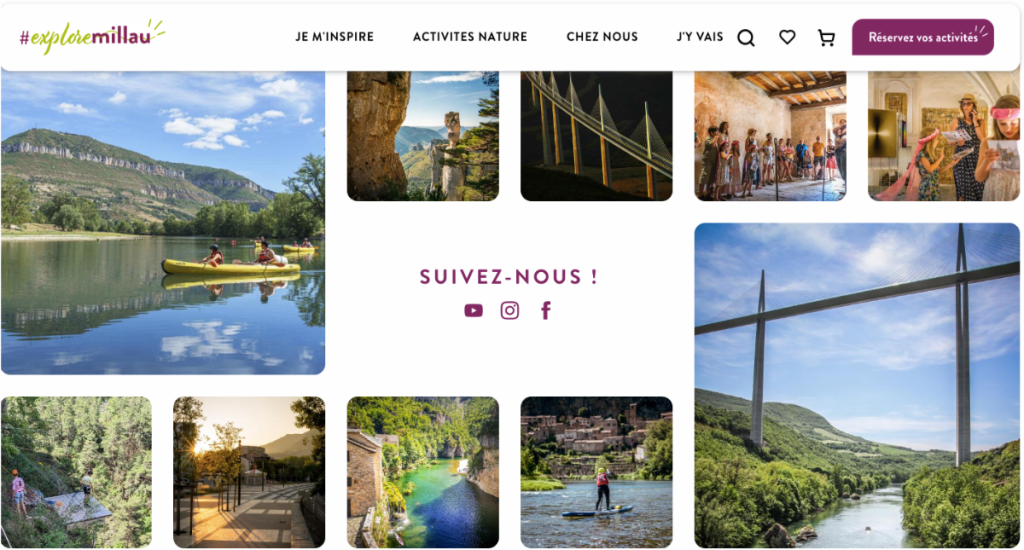
Millau offers a unique opportunity to immerse yourself in a region where tradition meets craftsmanship. Whether you’re interested in the art of leather-making, the history of sheep farming, or simply enjoying the beautiful French countryside, Millau provides an enriching experience.
For more information and to plan your visit, check local tourism resources and heritage sites in Millau: https://www.explore-millau.com/
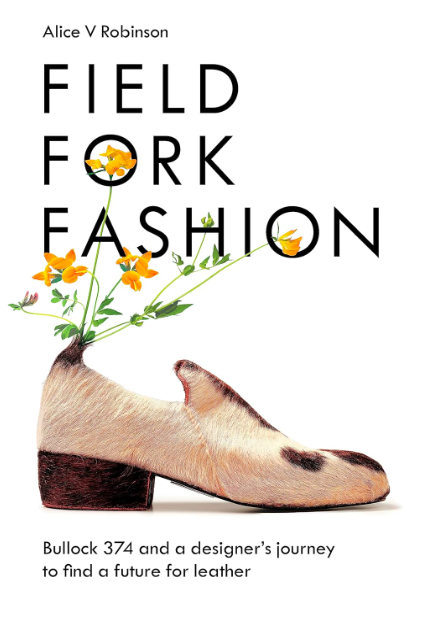
“Field, Fork, Fashion” by Alice V Robinson
In this personal investigation into ethical and traceable leather, fashion designer Alice Robinson begins a ground-breaking journey into the origin story of leather and its connection to food and farming.
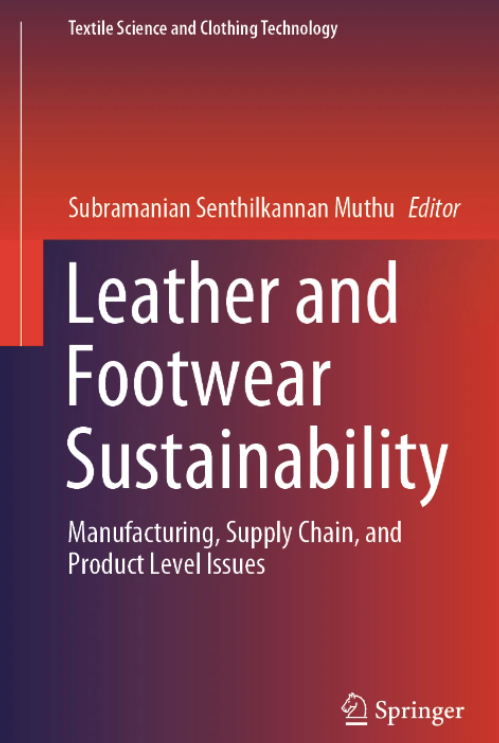
“Leather and Footwear Sustainability” editor Subramanian Senthilkannan Muthu
This book examines the manufacturing, supply chain and product-level sustainability of leather and footwear products, also exploring interesting areas of leather and footwear sustainability, such as waste & the 3R’s and their certification for sustainability.
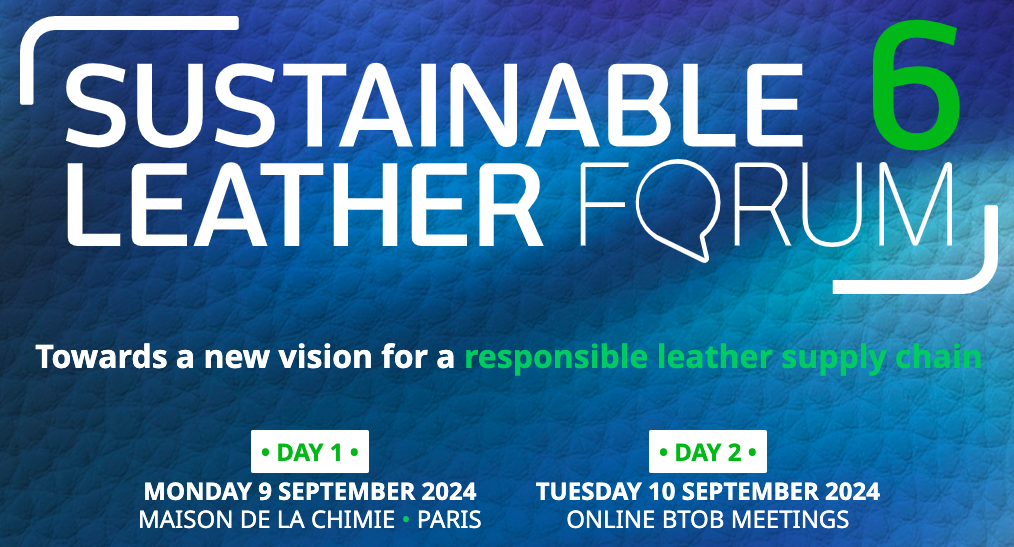
Sustainable Leather Forum
9-10 September, Paris
The Sustainable Leather Forum (SLF) is the first international event dedicated to CSR in the leather industries, held in Paris, France. It gathers over 400 international participants, including major fashion corporations, SMEs, institutional bodies, and consultancies, to discuss social, environmental, and economic issues and share CSR best practices.

Lineapelle
17-19 September, Milan
LINEAPELLE is the most important international exhibition dedicated to leather, accessories, components, synthetics and models for footwear, leather goods, garments and furniture.
Studio Leatherworking Training
(also available online)
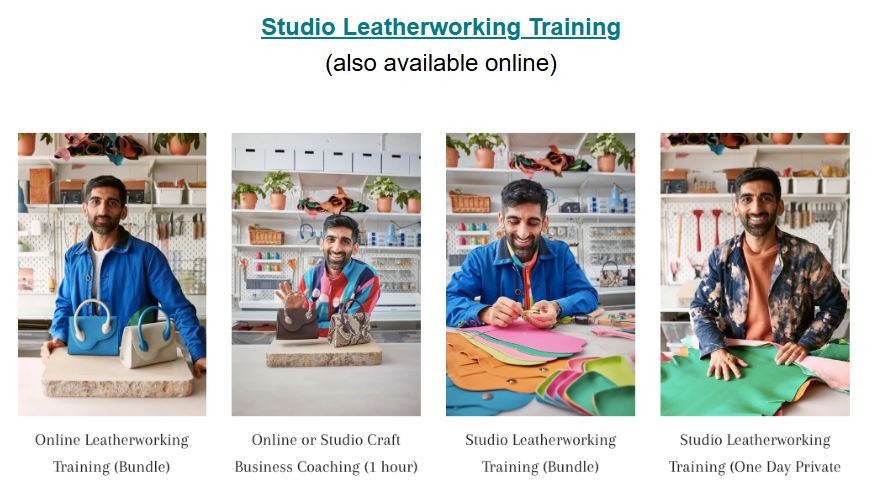
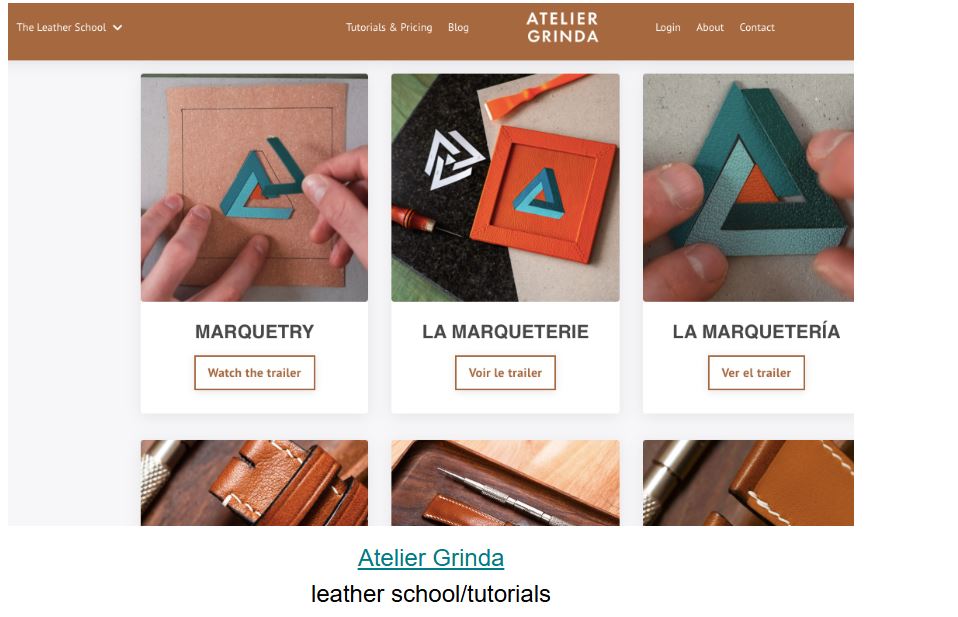
We wish you a pleasant summer holiday and hope you enjoy discovering the wonderful world of leather this summer!
Best Regards,
COTANCE Secretariat
If you want to go further:
Explore Millau – leather-related activities Website
Leatherbiz about Millau | Article
Intangible Cultural Heritage of the Pays de Millau | Website
Read more linguistic versions and former Newsletters.
View in Browser.
Copyright © 2024, COTANCE, All rights reserved.
Our mailing address is:
cotance@euroleather.com
Want to change how you receive these emails?
You can update your preferences or unsubscribe from this list.
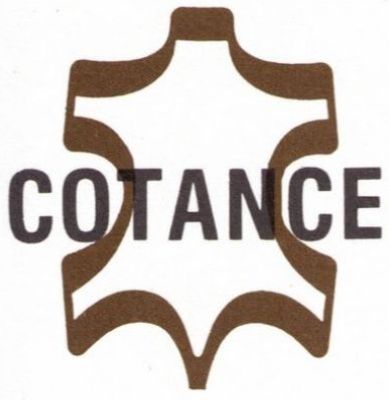
COTANCE newsletter June 2024
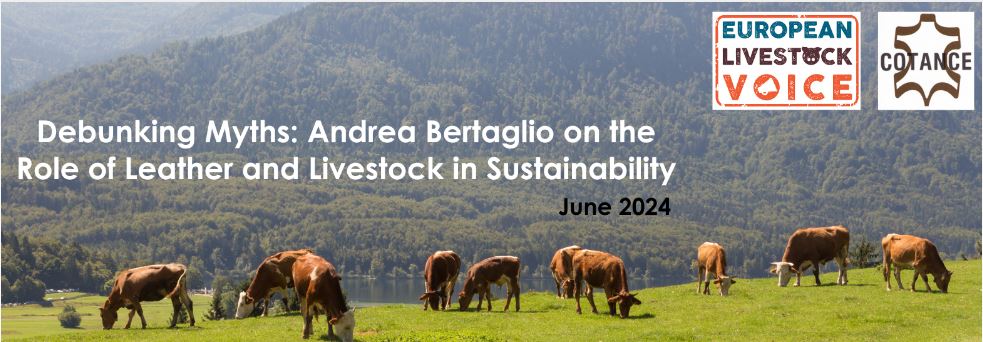
Debunking Myths: Andrea Bertaglio on the Role of Leather and Livestock in Sustainability

Andrea Bertagliois an independent journalist, spokesperson for European Livestock Voice and author of the book “In defence of Meat”. He is known for his in-depth knowledge of the meat industry and is therefore perfectly placed to give insight into the importance of livestock and leather sectors, their crucial roles in the circular economy, and their joint challenges in times of greenwashing.
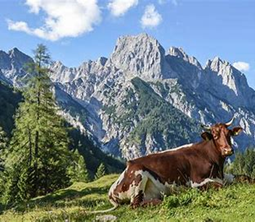
Answering the question on the relationship between animal livestock and humans,Andrea Bertaglio said: “Humankind and livestock have been proceeding together since the dawn of time. Meat made us humans. Without animal foods, we couldn’t develop our brains as they are. Without hunting, we couldn’t have organised our first ways of communication and our first kind of communities and societies. And if we speak about modern farming, we speak of nutrition, culture, traditions, know-how, economy, and hundreds of other things. Livestock is an incredibly important part of human life, and I hope it can still be like that for a very long time”. Answering the question on the relationship between animal livestock and humans,
The same is true for leather, which has long been in the history of man. Findings from the archaeological site in Schöningen (Lower Saxony) show that it dates back 320 000 years. An engraving was found on the remains of a bear’s skin, which evidences that hominids in northern Europe also hunted bears and skinned them to get meat and to use their hide to protect themselves from the cold. Leather features in human history.
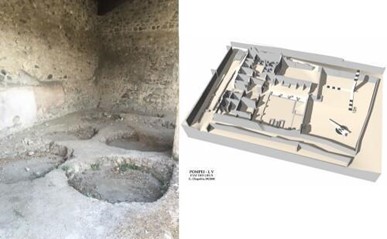
Old Tannery in Pompeii
Photo credits: UNIC – Concerie Italiane
“We have leather because it is a by-product from meat production. And it has been like that since prehistorical times, I suppose. One of the best and oldest examples of ”circular economy”. It simply makes sense. Otherwise, it would be like picking a fruit only to keep the peel, which is absurd. Besides, leather is a great product: instead of being disposed of as waste, hides and skins are transformed into one of the most durable, enjoyable, and sustainable products ever”, the journalist continued.
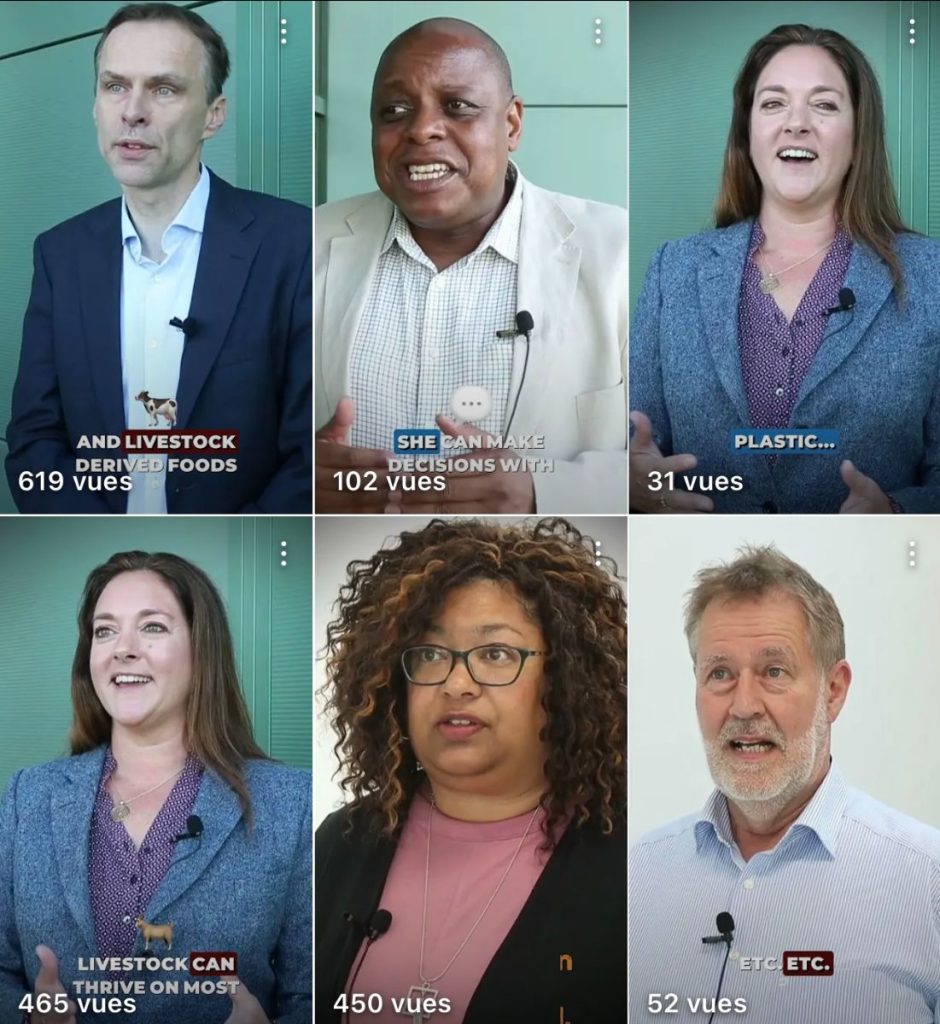
”Leather is the most bio-friendly in the car and is the most natural, sustainable, environmentally good by-product of the meat industry. The cows are not being grown for their leather”, – says nutritionist Diana Rodgers
Furthermore, leather is a natural material that can be repaired, reused, and repurposed, highlighting its crucial role in the circular economy and establishing it as a prime choice for sustainable practices.
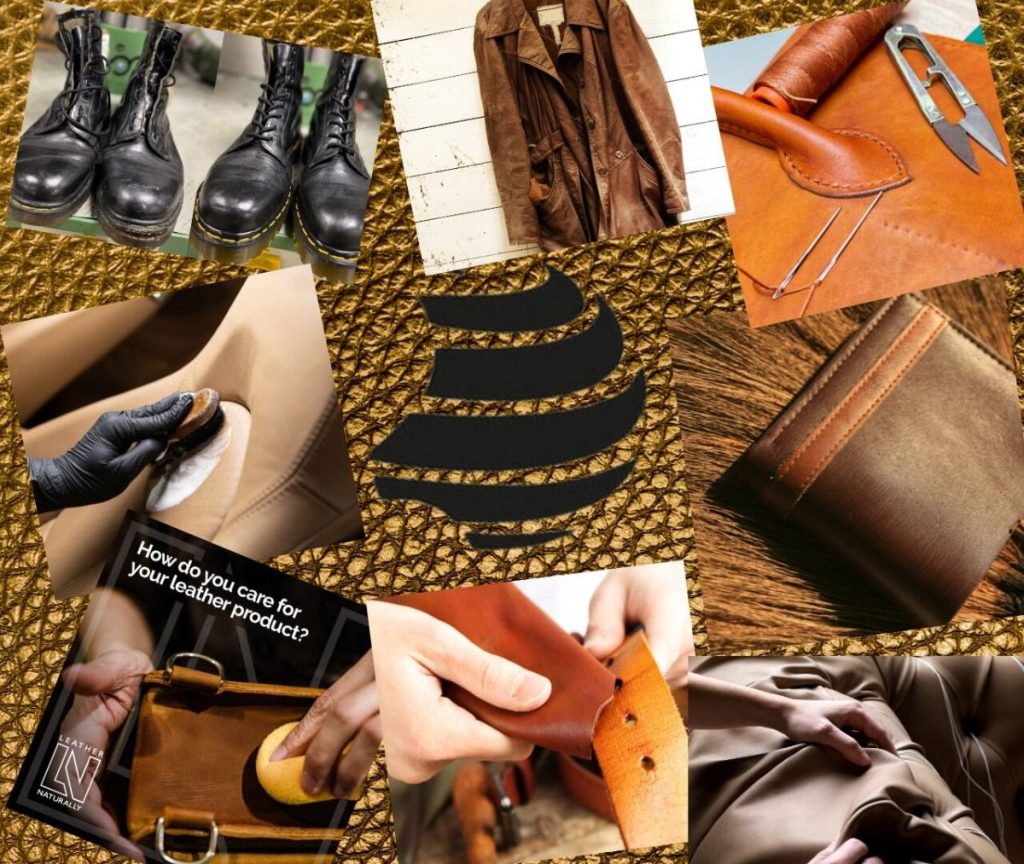
Despite these facts, both the leather and meat industries are facing a wave of unjustified accusations and manipulations from radical activist, vegan societies, whose deceptive narratives are likely to fall into the scope of the upcoming EU “Green Claims” Directive.
As an independent journalist, writing nearly two decades on environment and sustainability, Andrea Bertaglio has a mission: to crash the fake, dangerous, hypocritical narrative of the vegan world.
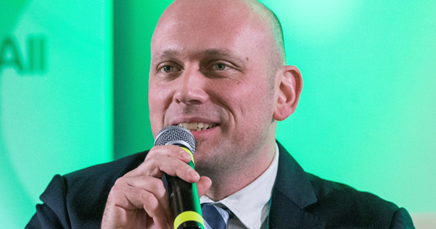
Reflecting on his daily motivation, he told VDL, the association for the German leather industry and COTANCE member: “I am highly motivated by the fact that vegan/animal rights activism is one of the biggest frauds we have seen in many years: they paint in green and give an ethical message to things which are only and merely based on profit. I am disturbed by the good faith of many people in the hands of cunning corporations. Playing the victim while making loads of money is very trendy at the moment, and I try my best to fight this”.
He says many people adopt a vegan lifestyle with noble intentions, seeking a holistic approach to improving the environment, animal welfare, and personal health. “The vegan narrative is perfect because it puts environment, climate, animals, and health together, providing a prepacked, easy solution, emphasising the benefits of choosing plant-based options which may include some commercially processed alternatives. They fell into the trap of very clever marketing”. However, he expresses concern that individuals might eventually reconsider their choices as they evaluate the long-term impacts of their dietary and lifestyle decisions on their health.
He further says: “Not everyone knows that to grow synthetic meat, its cells must be in a soup of growth hormones and antibiotics (yes, those banned and extremely reduced in animal breeding!). Not only that, but according to some studies, lab-grown meat can impact up to 50 times more than livestock farming, and to be produced, it must be grown in extremely energy-intensive bioreactors. For now, it is just another way to generate audiences, debate and polarisation. It is no coincidence that many newspaper articles have been written about this product, but very few scientific papers”.
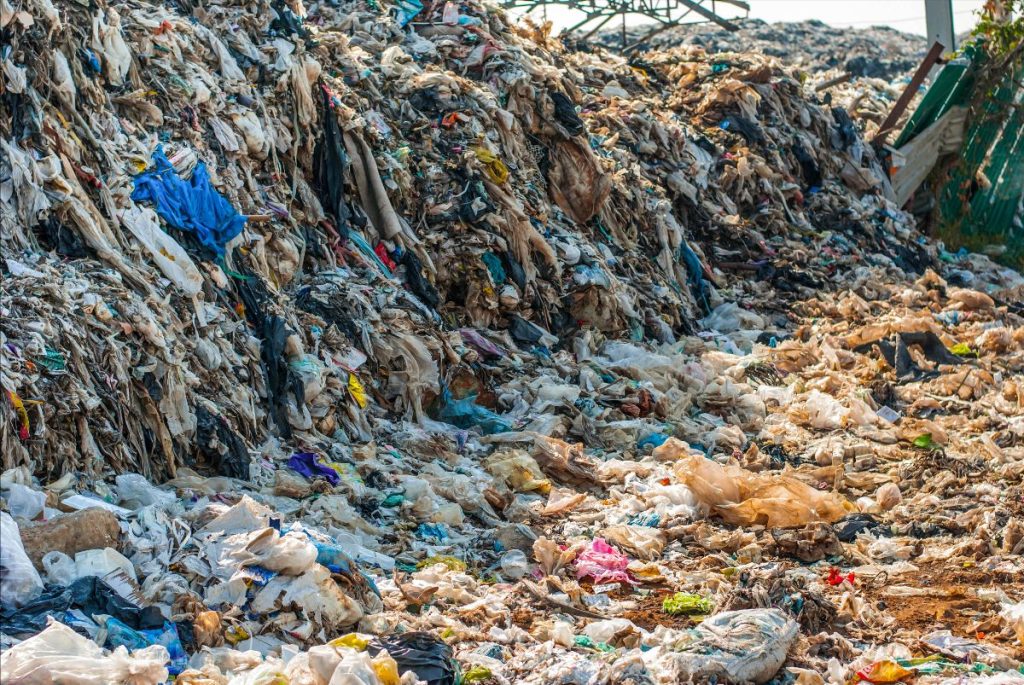
The same can be said about “vegan leather”, whose adverse impact on the environment starts to become visible. “Vegan leather,” commonly known as ”faux leather,” is essentially plastic derived from fossil fuels, contributing significantly to climate change and ecosystem pollution. Attempts to reduce the amount of plastic, mixing it partly with agricultural produce or waste, resulted in a significant amount of these products becoming non-recyclable textile waste due to their reliance on polyurethane binders and coatings (plastic).
Such fakes quickly decompose into microplastic. Consumers need to know that more durable and sustainable options exist, like leather.
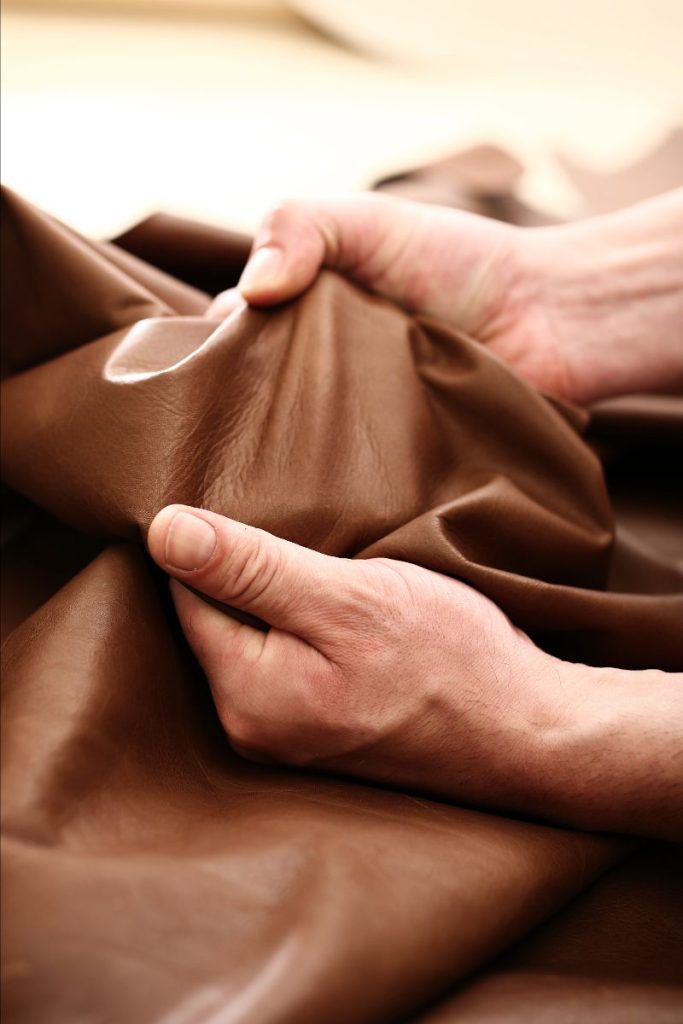
Remember: animals are not killed for leather. Their skins & hides represent on average just 1% of the animal’s economic value. Leather is just the result of a by-product of the meat industry. European Tanners transform hides & skins into sustainable fashion materials, generating wealth and jobs in Europe. That means opting for leather helps upcycle a resource that would otherwise go to waste.
The world is not black and white. Don’t become a victim of manipulating narratives that might make you feel neurotic and guilty. Make your own choices based on the evidence.
Regardless of your choice, the fact remains that leather is one of the smartest and most sustainable options a person should promote… even if you are vegan.
Edited by
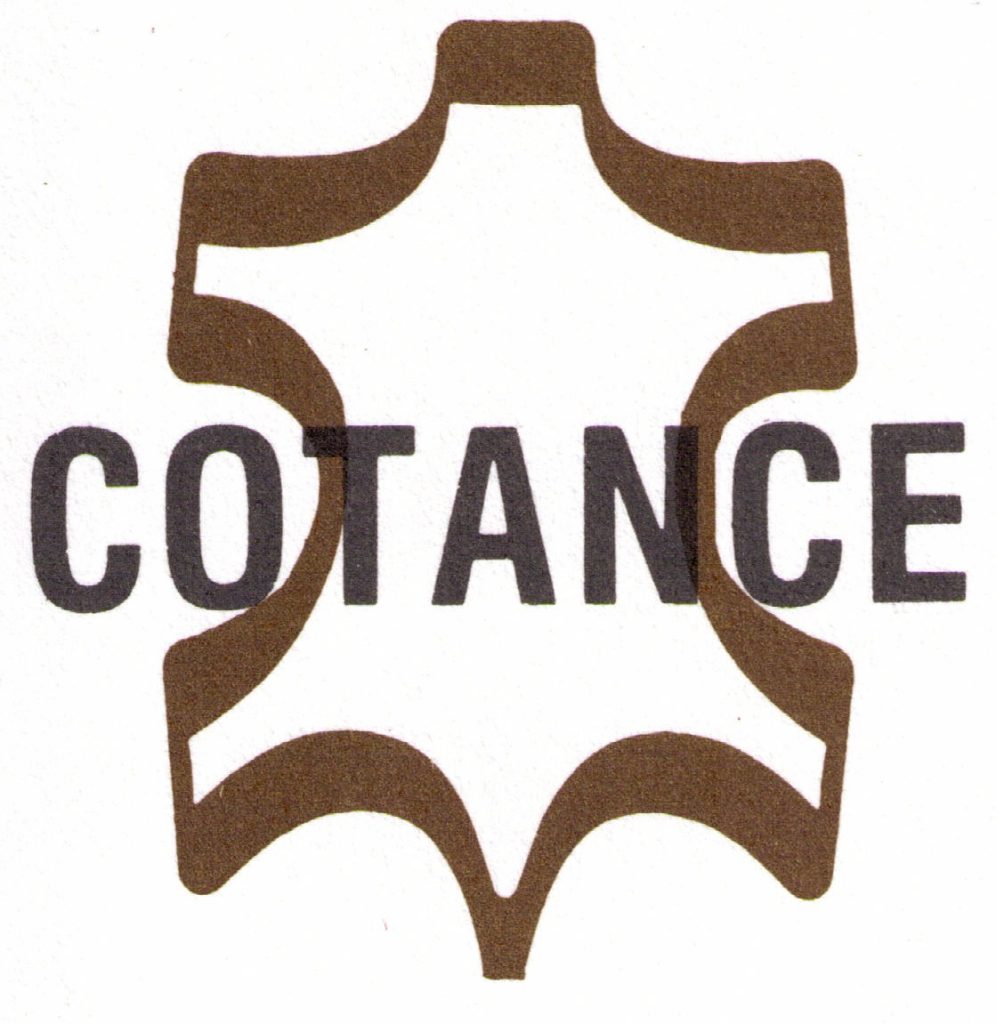
In cooperation with
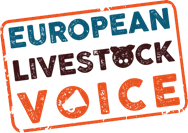
If you want to go further:
European Livestock Voice| Website
“Can we imagine the world without livestock?” | Article
In Defence of Meat | Book
Read more linguistic versions and former Newsletters.
View in Browser.
Copyright © 2024, COTANCE, All rights reserved.
Our mailing address is:
cotance@euroleather.com
COTANCE News 5/2024 – May
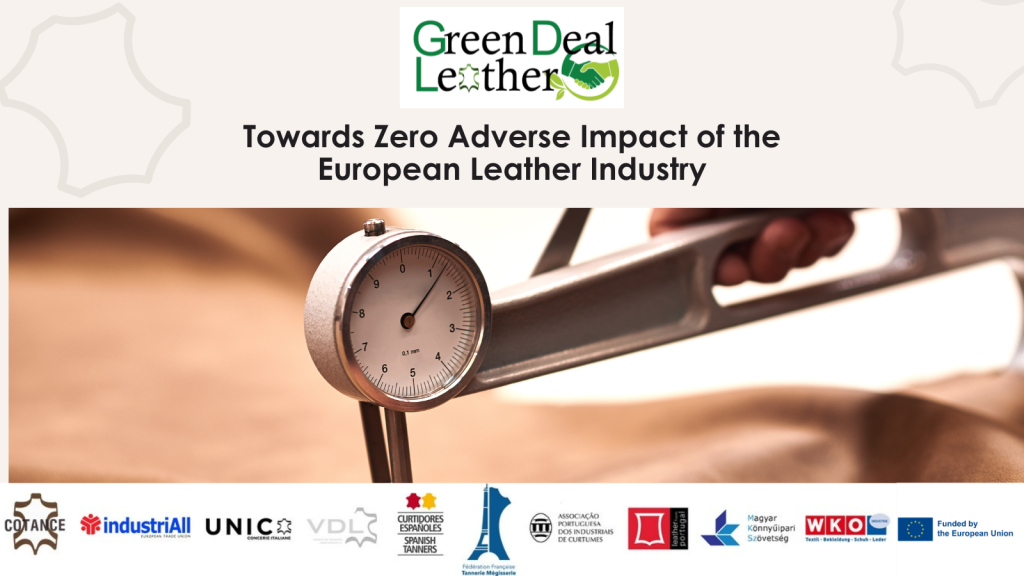
Towards Zero Adverse Impact of the European Leather Industry:
Final Conference
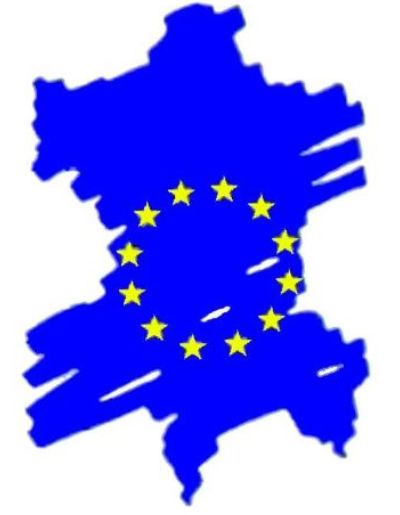
On May 16, in Brussels, the European Tanning and Leather social partners, COTANCE and industriAll Europe held the Green Deal Leather Final Conference, concluding a two-year, EU-funded Social Dialogue project ’Towards Zero Adverse Impact of the European Leather Industry – GREEN DEAL LEATHER’.
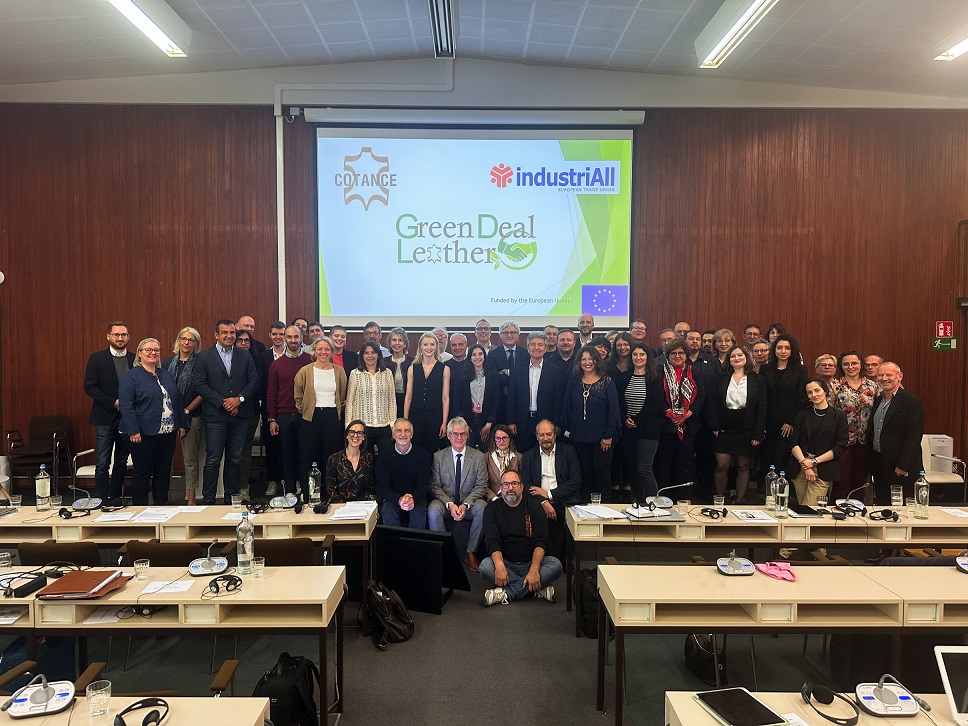
The event attracted around 100 on-site attendees and marked the end of a successful, EU-funded social dialogue project between the European social partners as well as national representatives from Spain (ACEXPIEL), Portugal (APIC), France (FFTM), Hungary (MKZS), Italy (UNIC), Germany (VDL), and Austria (FVTBSL).
Additionally, the project unveiled findings on the carbon footprint of leather in the ”Carbon Footprint of European Bovine Leather” study, presented at the Final Conference in Brussels on 16 May. Both studies highlighted the industry’s environmental and social credentials, providing tanneries with guidance to enhance their sustainability.

Additionally, the project unveiled findings on the carbon footprint of leather in the ”Carbon Footprint of European Bovine Leather” study, presented at the Final Conference in Brussels on 16 May. Both studies highlighted the industry’s environmental and social credentials, providing tanneries with guidance to enhance their sustainability.

The main insights on occupational health and safety include:
- Tannery-related accidents in EU countries surveyed (Italy, Spain, France, Germany, Portugal, Hungary, and Austria) declined by 16%, from 1,317 in 2019 to 1,102 in 2021.
- However, with an incidence rate of 3.2% in 2021, 15% on the way to/from work, and over 90% of recorded accidents being qualified as of ”minor” severity, there is still room for improvement.
Safety at the Workplace Study
Judith Kirton-Darling, General Secretary of industriAll European Trade Union said at the Green Deal Leather Final Conference:
”Good occupational health and safety practices in the workplace, with ongoing training and checks, are essential to keep tannery workers safe. Social dialogue is key, and trade unions and workers’ representatives must be able to highlight any issues to management and know that they will be acted on swiftly. These preliminary results are a baseline and now we must work together to achieve zero accidents.”
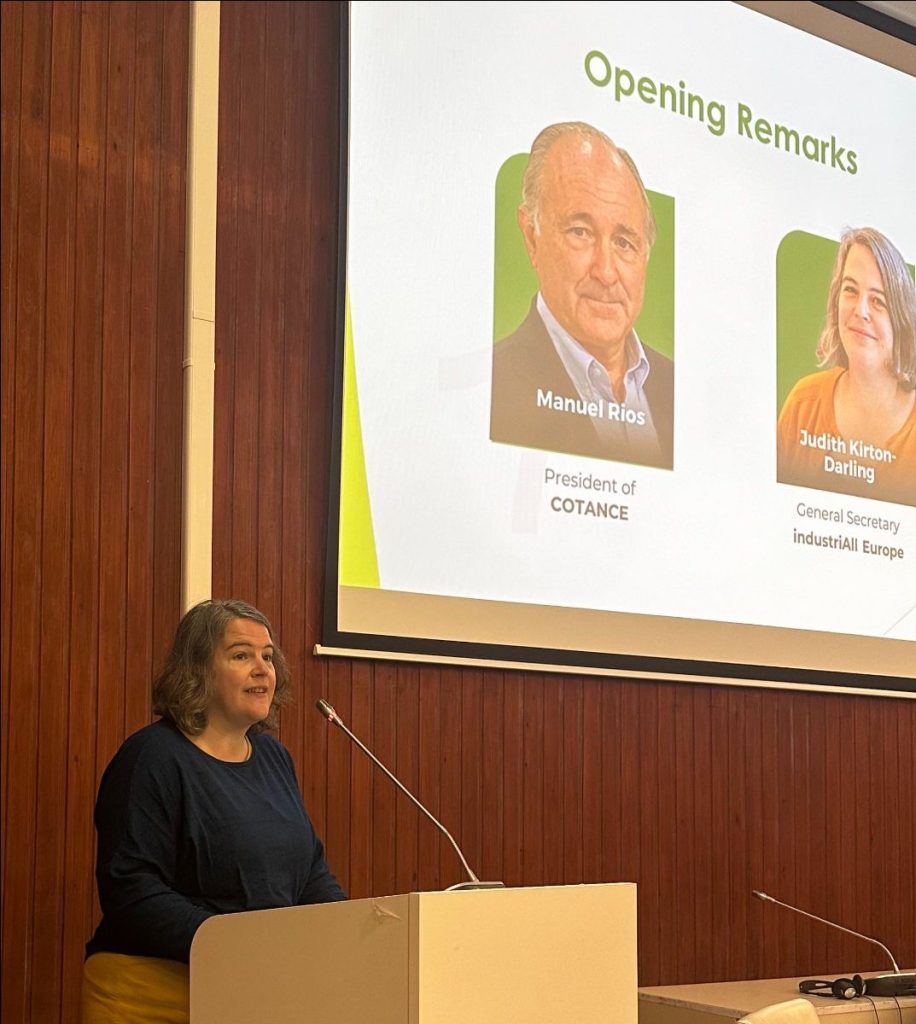
The main insights into the environmental impact include:
- Calculating leather’s carbon footprint is a complex exercise that requires a thorough understanding of the tanning industry, its processes and products.
- The result obtained with the ECO2L method indicates an average of 8kg of CO2 per m2 of bovine leather in EU tannery processes.
- This figure can vary based on specific characteristics of the leather, such as thickness and performance requirements. Therefore, since each batch of leather is made to order, customers have the opportunity to influence the eco-design of their leather products.
- Excluding the impact of livestock breeding reveals the actual footprint of leather tanning and the importance of chemicals used during the tanning process, but also that replacing one chemical with another that has a lower carbon footprint does not always result in overall improvement.
Carbon Footprint Study
Mr Manuel Rios, President of COTANCE: ”Through the Green Deal Leather project, COTANCE continues to equip European tanners with the tools and intelligence needed to progress towards a more sustainable future. We believe that transparency is key to advancing our social and environmental credentials and dispelling common misconceptions about leather. We are proud to undertake this journey hand in hand with our social partners.”
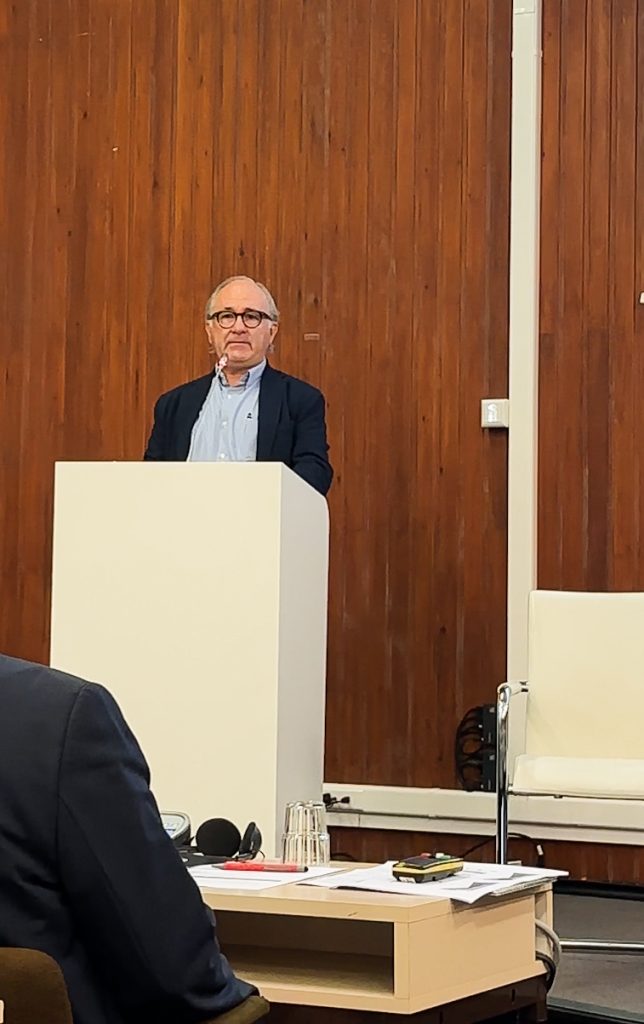
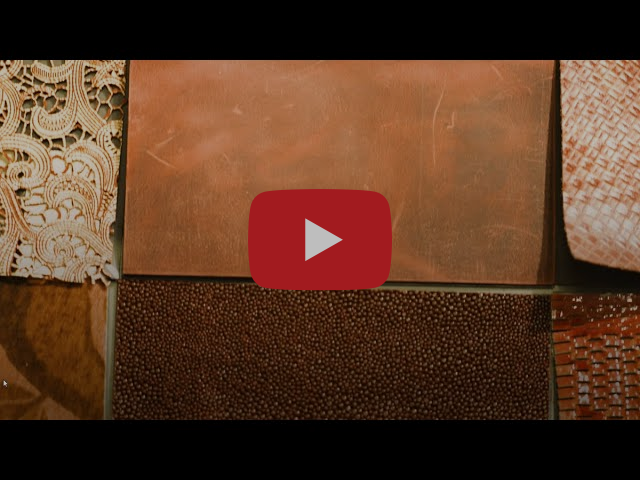
https://cdn-images.mailchimp.com/product/campaigns/content-blocks/boxedText.svg
The Final Conference of the GDL project showcased the work and achievements of the social partners, who, in these last two years, have gathered and produced data that will greatly benefit the tanning and leather sector globally. By working together in social dialogue, the European leather industry produces tools and intelligence which contribute to worker safety, protect the environment, and promote sustainable, high-quality leather, supporting millions of jobs worldwide.
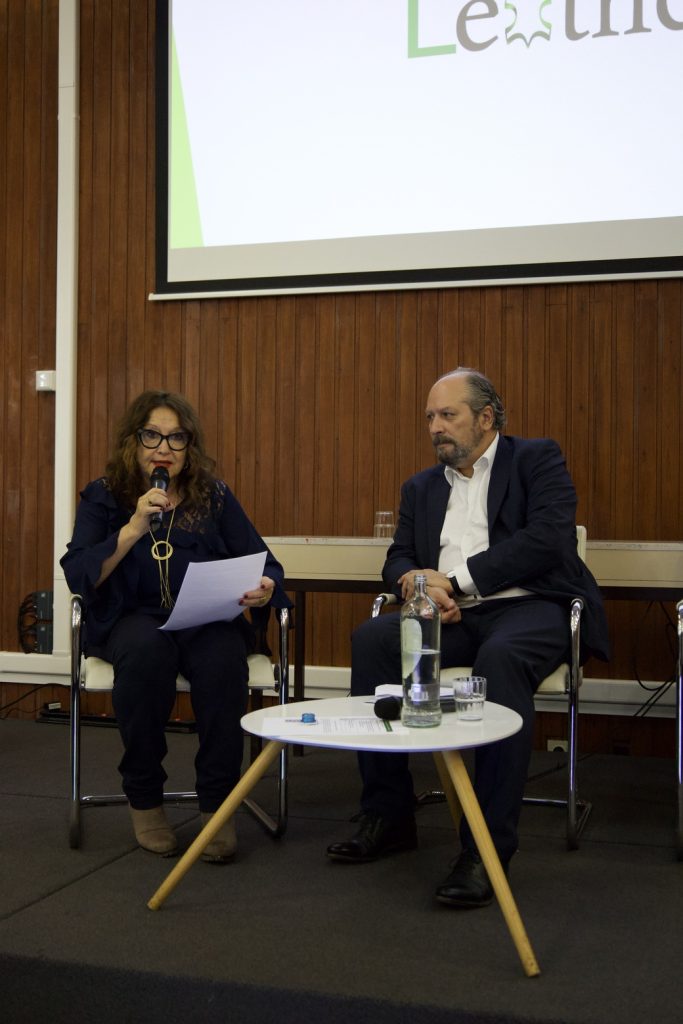
The Final Conference of the GDL project showcased the work and achievements of the social partners, who, in these last two years, have gathered and produced data that will greatly benefit the tanning and leather sector globally. By working together in social dialogue, the European leather industry produces tools and intelligence which contribute to worker safety, protect the environment, and promote sustainable, high-quality leather, supporting millions of jobs worldwide.
So, next time you’re deciding between leather and another material, remember that choosing European leather not only offers a high-quality experience that you can enjoy for a long time but also delivers a product crafted with the utmost care for both employees and the environment.
Edited by
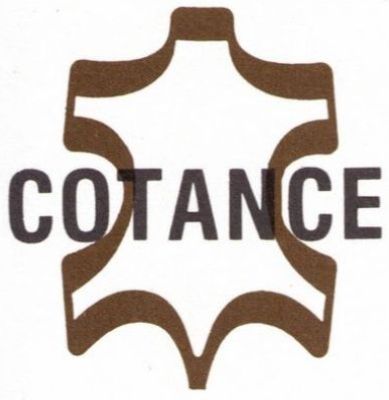
In cooperation with

If you want to go further:
Green Deal Leather – Final Conference | Press Release
EURACTIV about us | Website
Brussels Times about us | Website
World leather day

World Leather Day:
Celebrating Leather Together
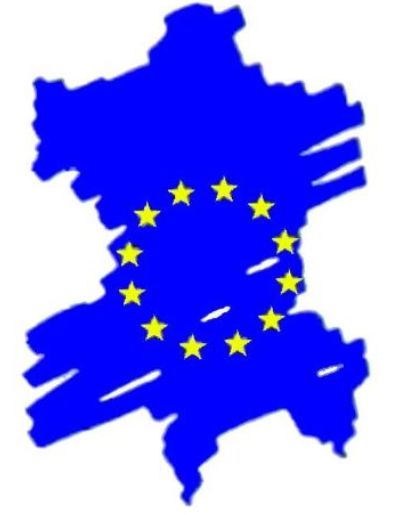
Today, COTANCE joins the entire world in celebrating Leather!
On April 26, 2024, we come together as an industry to celebrate World Leather Day, honouring leather’s enduring and unique qualities. This year we are focusing on the “Repair, Reuse, Repurpose” theme emphasising the long-lasting, repairable, and versatile qualities of leather that make it the ideal material for a circular society.
So let’s explore what MORE leather can offer to YOU!
We all understand that choosing leather goes beyond selecting a beautiful and high-quality material that elevates your image and mood – it’s a bold statement to the world.
But there’s even more to it than you might realize. Whether you know it or not, with leather, you opt for a more sustainable, green, and slow-fashion world. By choosing leather, you’re not just selecting comfort and individuality for today; you’re investing in a greener, more sustainable future as leather articles can be easily repaired, reused, and repurposed, making it the best choice for sustainable practices.
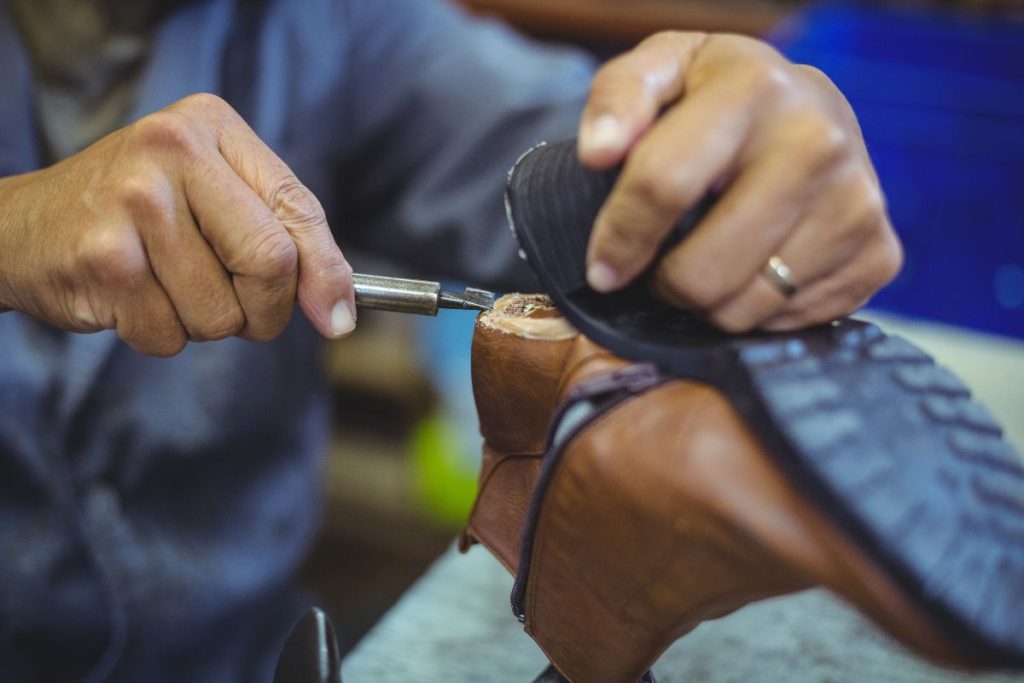
Because Leather champions durability, it is natural that we keep REUSING it.
– Choosing leather allows you to REUSE it, meaning re-wearing your leather footwear naturally season after season. And if issues like worn heels or soles arise, you can have them repaired quickly and affordably in just one day at your local shoe repair workshop.
– Choosing leather allows you to REUSE it by passing your cherished leather item over from generation to generation. Think of your father’s leather briefcase, a symbol of his hard work and dedication, or the leather couch you took from home when moving into your first apartment. Quality vintage items like this never go out of fashion.
– and of course, choosing leather brings economic advantages. Extending the life of leather items means we shop less and save money (just shared one of the secrets of wealth – no need to thank us 🙂 )
For more inspiration on leather’s longevity and versatility visit the world’s first-ever digital exhibition “It’s a Long Story” by Leather Naturally.
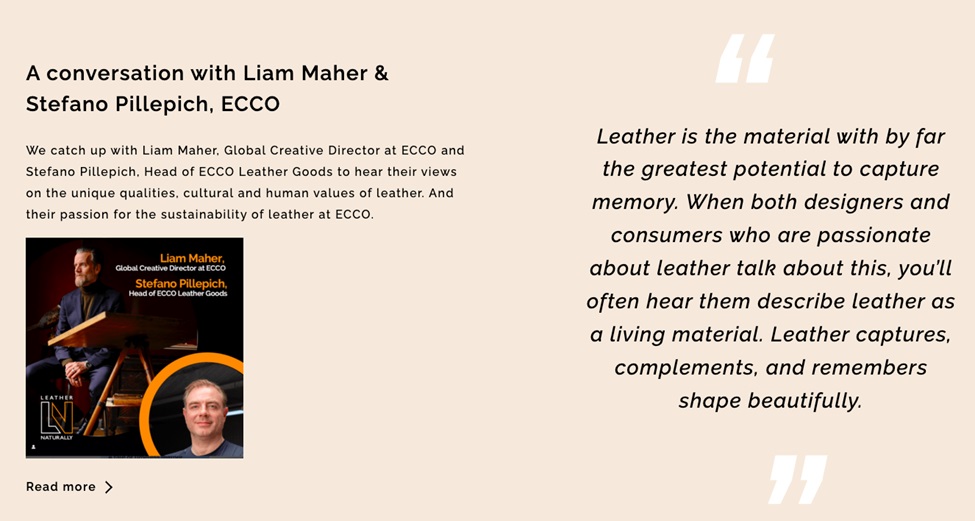
Because Leather is ageing gracefully, it’s remarkably simple to REPAIR it.
When you repair your leather goods, you breathe new life into your favourite items, deepening the connection between you and the goods that are part of your personal story. Just as we strive to repair relationships rather than end them, fixing leather enhances its longevity and value.
Watch the Alliance France Cuir demonstration on how nice and beneficial it is to repair your leather items. Well, if a leather bag survived a 476 kg metal band saw cutting at 100 metres per minute, imagine how well it can withstand everyday wear and tear!

Or explore the 120-year-old craftsmanship of the BootRepair Company and be amazed by the heritage behind each repair. So then next time, instead of buying a new pair of shoes, consider repairing them or treating them to a leather spa experience.
Remember, by repairing your leather items, you not only reduce waste and save money but also strengthen the bond with your personal belongings.
Because leather is a very supple material, it is extremely easy to REPURPOSE it.
Leather belts can be creatively repurposed into carry bags, camera straps, stylish dog collars, or personalised bracelets. Leather wallets can be transformed into durable ties for gardening or workshops, chic pulls for DIY furniture, or elegant bookmarks.
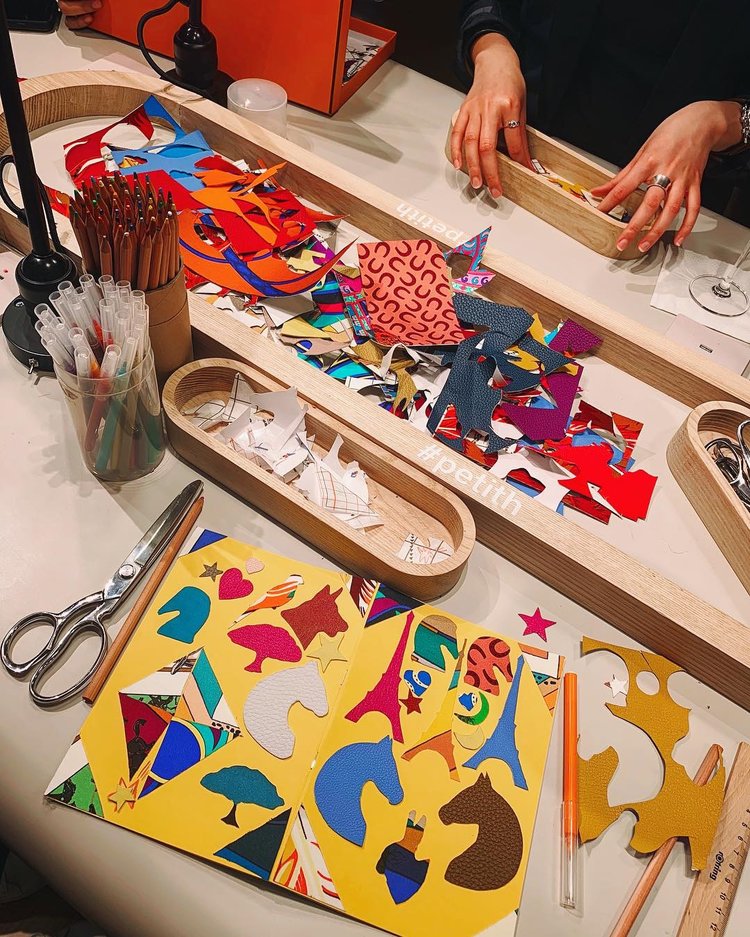
And it’s not just individuals who are doing this; brands like Hermès are championing the reinvention of everyday objects using leather leftovers and other materials, in their Petit h atelier. They forge surprising connections between artists and craftsmen, creating new alliances between expertise and natural materials. Why not join the movement?
To start with, get inspired with Nquart’s step-by-step leather crafting guides and create your own exclusive, personalised leather items. Enjoy each stage of this creative process – give it a try and have fun!
Alternatively, discover how to upcycle your old leather jacket with just a few simple steps by watching a short video from craftsman Yusuf Osman.
The leather has so much to offer! Beyond being beautiful, natural, and durable, leather articles can be easily repaired, reused, and repurposed, making it the best choice for sustainable practices. By extending the life of leather goods, we minimise waste, reduce landfill use, and lessen environmental impact.
If leather isn’t one of the best sustainable investment decisions, we don’t know what is!
Agree? Help us spread the word to have more people celebrate the versatility and sustainability of leather!
Edited by

In cooperation with
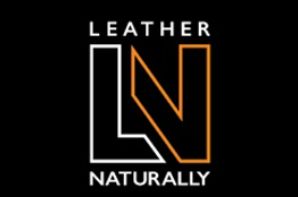
If you want to go further:
Green Deal Leather – Final Conference | Website
Alliance France Cuir | Website
Leather Naturally | Website

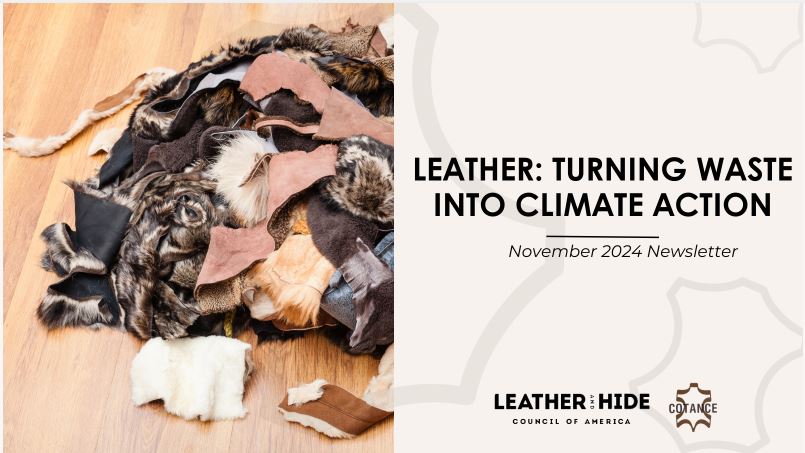
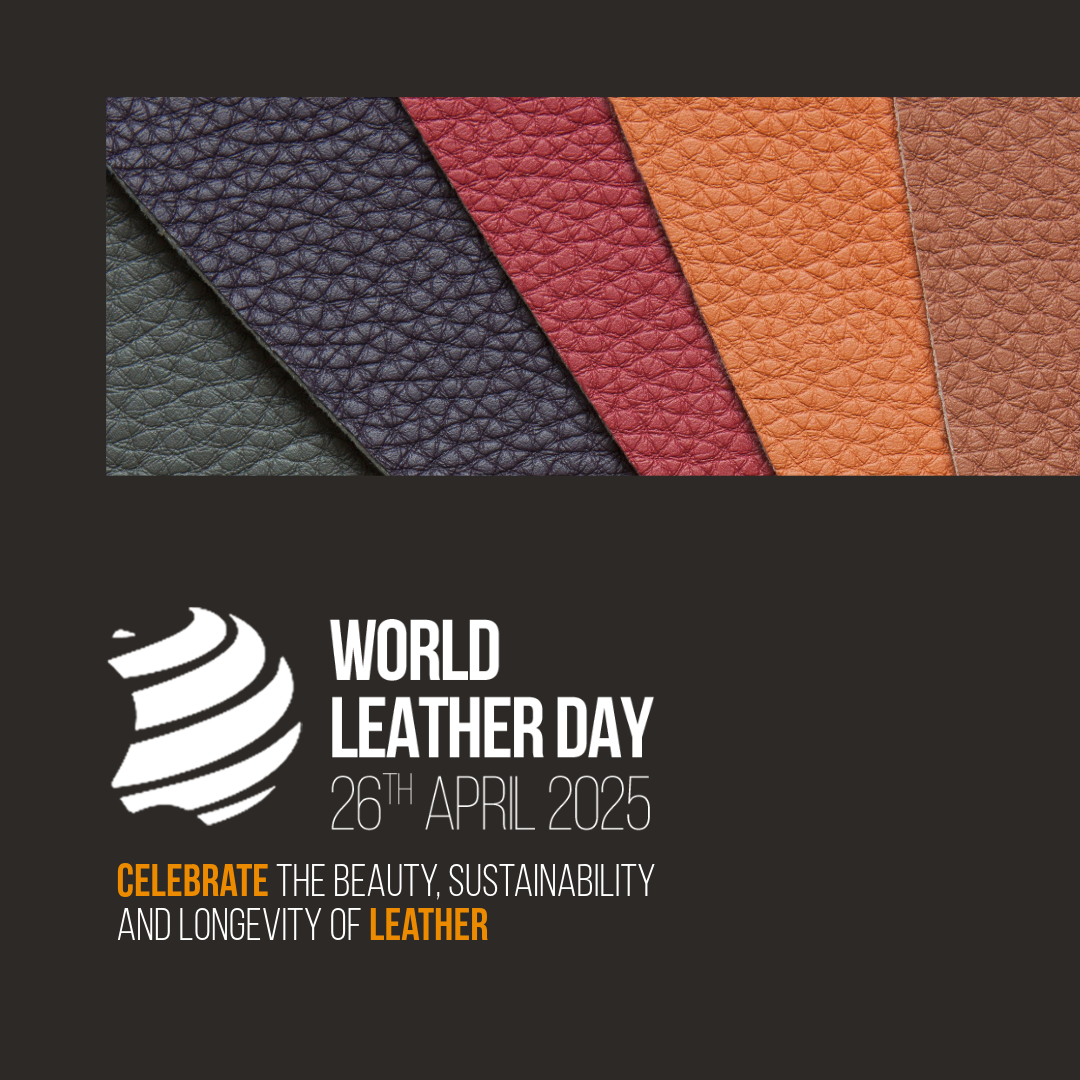 Welcome to popups plugin
Welcome to popups plugin